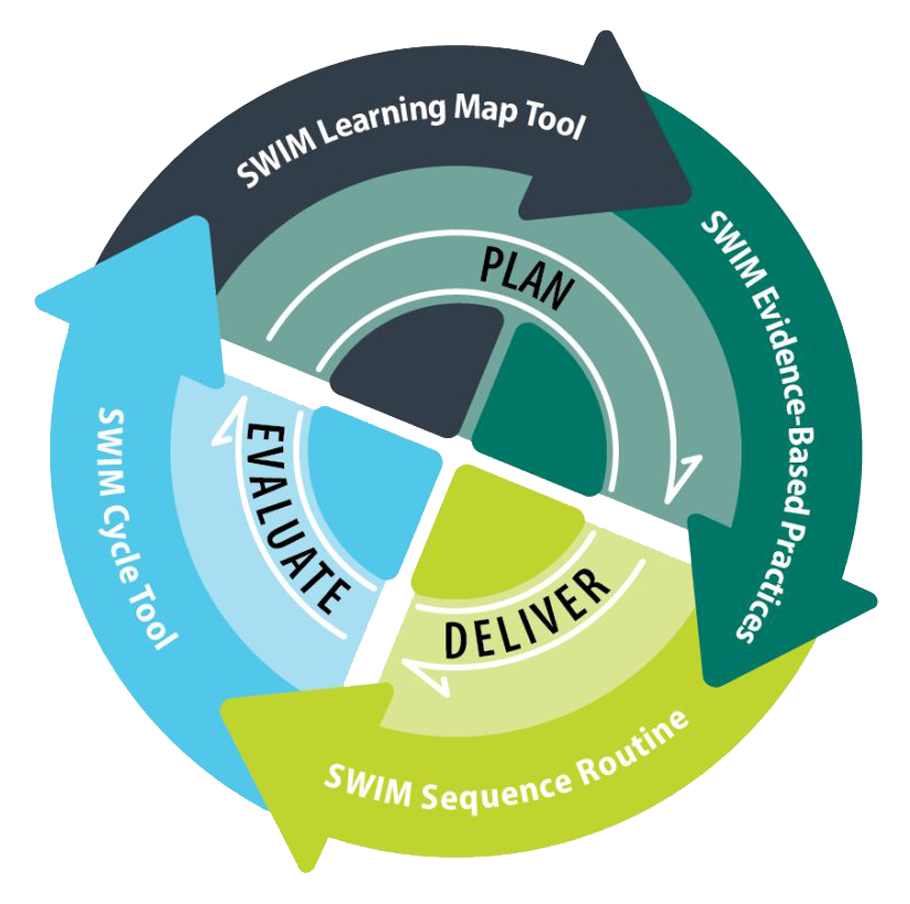
This project brief describes why effective writing instruction is important for students with intellectual disabilities. It includes a description of how writing develops and how students who cannot use a pencil can write.
Teachers use the SWIM Cycle to plan, deliver, and evaluate instruction. Each phase of the cycle includes tools and resources to support teachers in delivering writing instruction as a part of a comprehensive approach to literacy. SWIM professional development resources and coaching can support teachers in implementing the SWIM Cycle.

The cycle begins with a learning map tool that recommends a location on the learning map to begin instruction for each student. Teachers then receive instructional plans that show how evidence-based practices can be used to teach different types of writing.
Teachers use their plan to teach students using the SWIM sequence. The sequence is a five step, flexible instructional routine that gets students excited about communicating their ideas through writing.
Teachers use the SWIM Cycle Tool to reflect on the lesson, what the student learned, and where to begin teaching in the next cycle.
All students can engage in meaningful learning about writing. The SWIM approach gets students with intellectual disabilities excited about communicating their ideas through writing.
The SWIM Resource Collection is an open-access library of educational resources for professional learning leads, coaches, and teachers of students with intellectual disabilities.
This project brief describes why effective writing instruction is important for students with intellectual disabilities. It includes a description of how writing develops and how students who cannot use a pencil can write.
This project brief describes the Shared Writing Instructional Model and its components, including an instructional cycle and a flexible instructional routine for teaching students to write.
This project brief describes pre-emergent, emergent, transitional, and conventional writing. A set of vignettes describe examples of how all students, including students with complex support needs, can work on learning to write.
This project brief describes evidence of the effectiveness of the Shared Writing Instructional Model based on findings from the project evaluation.


